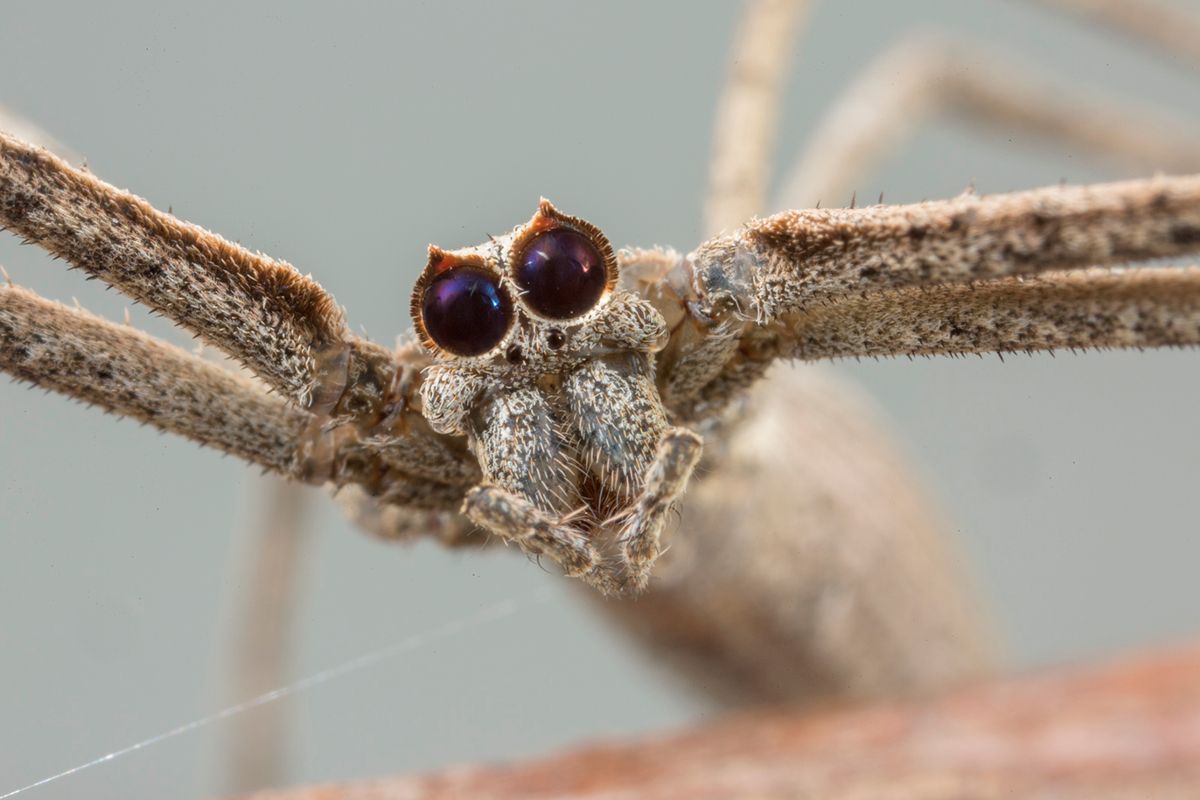Ogre-faced spiders are strange looking animals that live in tropical forests. They look like an ogre because their faces are dominated by two huge eyes. These eyes are two-thousand times more sensitive than the human eye under low-light conditions, making them perfectly suited for hunting at night. Each night, the spider hangs suspended from a frame web, waiting for an unfortunate insect. Then it pounces and snares its prey with a sticky web held between the front four of its eight legs.
Sometimes the spider lunges downward to catch prey off the ground. But, they also make backwards strikes, doing a back flip to snatch a flying insect out of mid-air. These strikes couldn’t be guided by vision.
In 2020 a team of neuroethologists reported that the ogre-faced spider uses sound to guide its back-flip strikes. The researchers discovered the spiders’ sensitivity by using electrodes to show that cells in their legs and brains responded with electrical activity when they played sounds to the animal. The frequencies they used included those found in the buzzing of flying insects.
Next, the researchers played these same sounds to ogre-faced spiders in the field and in the carefully acoustically-controlled circumstances of the lab. The spiders responded with back flip strikes, like the ones they used to catch flying insects. This was good evidence that those strikes are indeed guided by sound.
The researchers found that the spiders detect sound with organs in their legs like those many other spider species use to detect vibrations in their webs. It is not yet clear whether the spiders are actually hearing sounds in the air or detecting sound-caused vibrations in their web.










